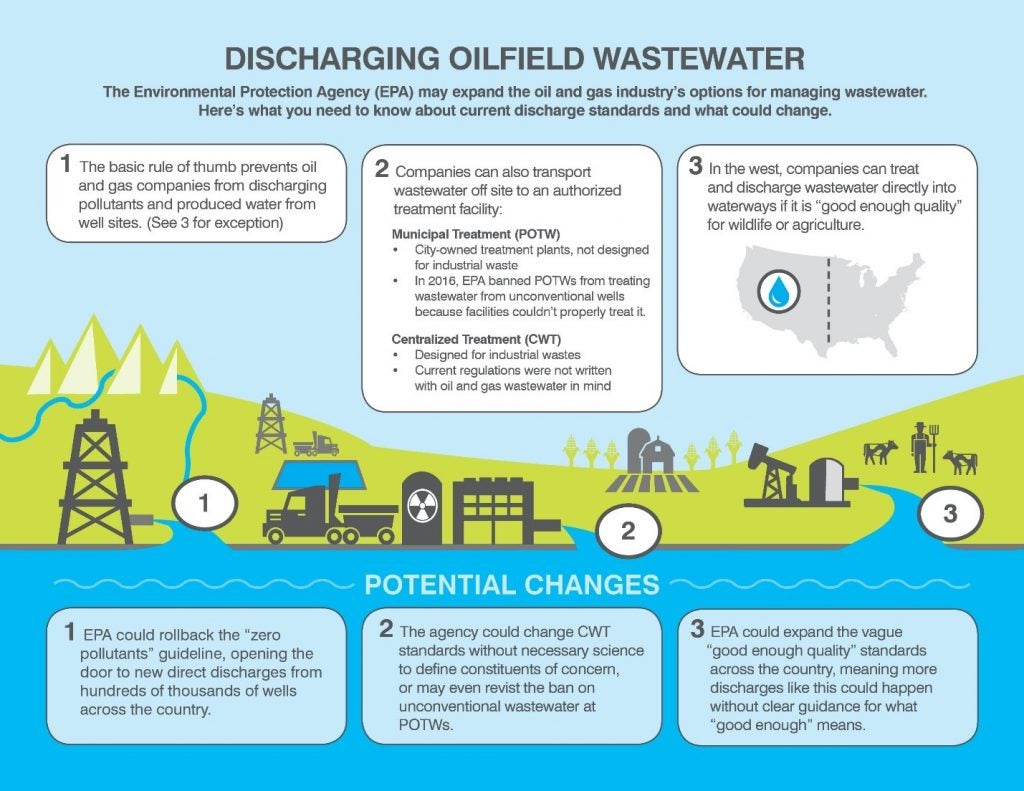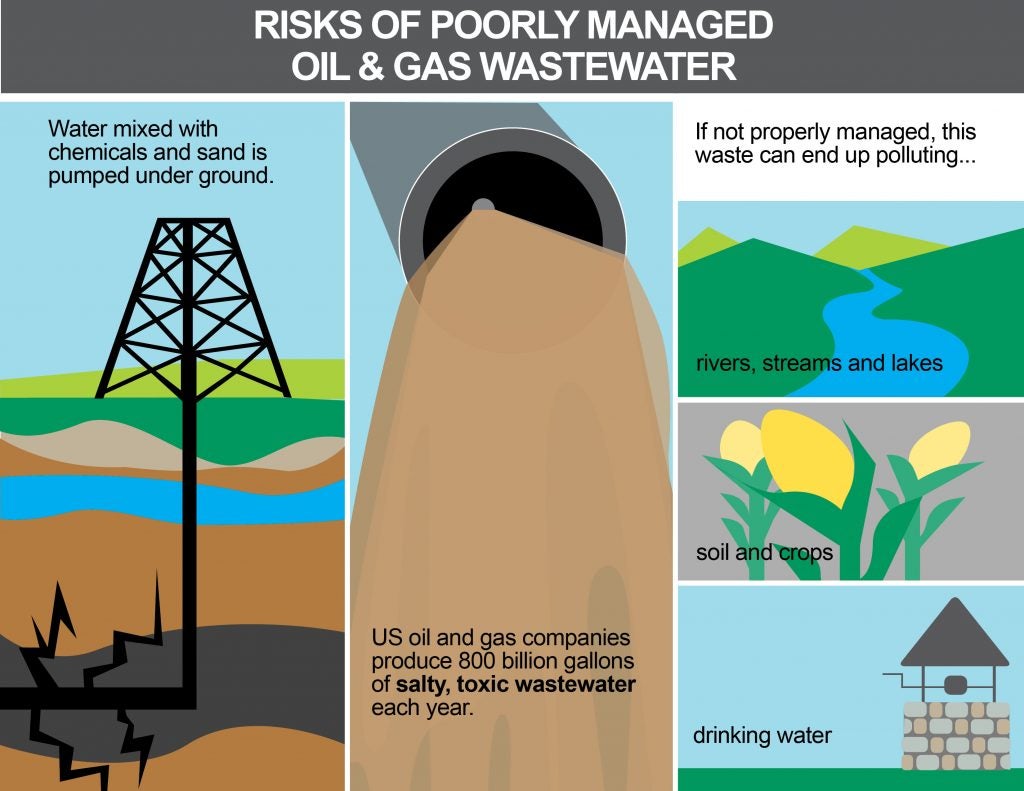Many Americans are aware that we are experiencing a major energy boom. But what many folks may not realize is that with this increase in oil and gas, also comes an increase in waste – specifically wastewater. In fact, for every barrel of oil produced wells can generate 10 times as much chemical-laden wastewater. All told, the industry produces over 900 billion gallons of wastewater a year, and we know very little about the chemicals in it.
Traditionally, companies have pumped this wastewater deep underground, but the growing volume is creating new challenges– leading many to wonder whether there may be different options for managing or reusing it. One of those options is treatment and discharge to rivers or streams.















